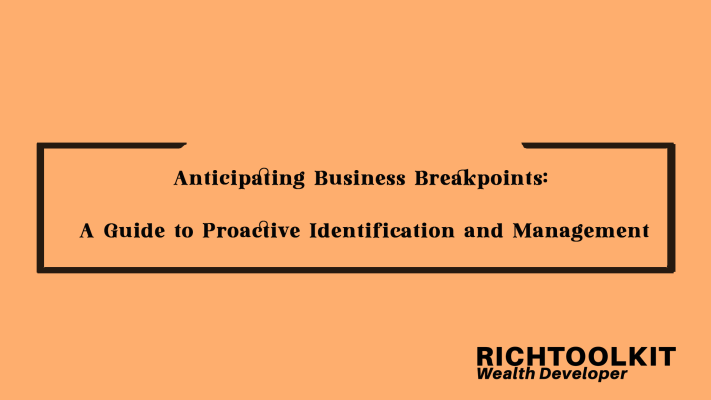Business Consultant, Business growth, Cash flow, Cash flow training, Gaining wealth, Growth strategist, Income strategist, Investment classes, Investment training, Strategic planning, Team Building
How do grow my revenue and profits with minimal risk and maximum upside from zero to 8 figures business?

Author: Mohammad.Shams I Reading time: 3 minutes
Growing revenue and profits from zero to 8 figures is an ambitious goal that requires a strategic and disciplined approach.
While there’s no guaranteed way to eliminate all risks, you can mitigate them by making informed decisions and focusing on sustainable growth.
Here are key strategies to consider:
1. Thorough Market Research:
– Understand Your Market: Conduct comprehensive market research to identify your target audience, competitors, and market trends. Understand the needs and pain points of your potential customers.
– Validate Your Idea: Validate your business idea through surveys, prototypes, or a minimum viable product (MVP). Ensure there is demand for your product or service before scaling.
2. Build a Strong Value Proposition:
– Unique Selling Proposition (USP): Clearly articulate your unique value proposition. Differentiate your business by offering something distinctive and valuable to customers.
– Customer Benefits: Highlight the benefits customers will receive from your product or service. Make it clear why they should choose your offering over competitors.
3. Strategic Business Model:
– Scalable Business Model: Develop a business model that is scalable. Consider recurring revenue models, upselling opportunities, and cost-effective ways to acquire and retain customers.
– Profit Margins: Ensure that your pricing strategy allows for healthy profit margins. Factor in all costs, including production, marketing, and overhead, to determine your pricing structure.
4. Customer Acquisition and Retention:
– Effective Marketing Strategies: Implement targeted and cost-effective marketing strategies. Leverage digital marketing, social media, content marketing, and search engine optimization (SEO) to reach your audience.
– Customer Retention Programs: Develop strategies to retain existing customers. Loyalty programs, excellent customer service, and personalized communication can contribute to customer loyalty.
5. Operational Efficiency:
– Lean Operations: Focus on operational efficiency. Streamline processes, reduce waste, and optimize resources to ensure that your business operates efficiently.
– Technology Integration: Leverage technology to automate repetitive tasks, enhance productivity, and improve overall business operations.
6. Financial Management:
– Strong Financial Discipline: Maintain strict financial discipline. Monitor cash flow, control expenses, and make data-driven financial decisions.
– Invest Wisely: Invest in areas that drive growth and efficiency. Allocate resources to initiatives with a high return on investment (ROI).
7. Strategic Partnerships and Alliances:
– Collaborate: Explore strategic partnerships and alliances that can help expand your reach or enhance your offerings. Consider complementary businesses with which you can collaborate.
– Distribution Channels: Identify and leverage effective distribution channels. Partnerships with distributors or retailers can significantly impact your market penetration.
8. Talent Acquisition and Development:
– Build a Strong Team: As your business grows, invest in building a talented and dedicated team. A skilled and motivated workforce is crucial for sustained growth.
– Continuous Learning: Encourage a culture of continuous learning and development. Invest in training programs that enhance the skills of your team.
9. Adaptability and Innovation:
– Stay Agile: Be adaptable to changing market conditions. Continuously monitor industry trends, customer preferences, and emerging technologies.
– Innovation: Foster a culture of innovation within your organization. Regularly assess and improve your products, services, and processes.
10. Customer Feedback and Iteration:
– Listen to Customers: Actively seek customer feedback and use it to iterate on your products or services. Customer input is invaluable for refining and improving your offerings.
– Agile Development: Implement an agile development approach that allows you to make iterative improvements based on real-time feedback.
11. Risk Management:
– Identify and Mitigate Risks: Identify potential risks to your business and implement strategies to mitigate them. This could include diversifying your customer base, securing key partnerships, or having contingency plans in place.
– Scenario Planning: Develop scenario plans for potential challenges and disruptions. Being prepared for various scenarios helps in making quick and informed decisions.
12. Scale Gradually:
– Phased Growth: Consider a phased approach to growth. Scaling too quickly without adequate infrastructure and resources can lead to operational challenges.
– Monitoring and Evaluation: Regularly monitor key performance indicators (KPIs) and evaluate the impact of growth initiatives. Adjust strategies based on performance data.
13. Legal and Compliance:
– Ensure Compliance: Stay informed about legal and regulatory requirements in your industry. Ensure that your business operations comply with relevant laws and regulations.
– Legal Counsel: Consider consulting legal professionals to ensure that your business practices are legally sound and protected.
14. Network and Industry Involvement:
– Networking: Build a strong professional network. Attend industry events, engage with peers, and seek mentorship to gain insights and support.
– Industry Involvement: Be actively involved in your industry. Stay abreast of industry developments and participate in relevant associations or communities.
15. Strategic Exit Plan:
– Plan for the Future: Develop a strategic exit plan, even if you are in the early stages. Understanding potential exit options (e.g., IPO, acquisition) helps align your long-term goals.
– Financial Preparedness: Be financially prepared for unexpected changes or opportunities. Having a clear exit strategy can also attract potential investors or partners.
16. Customer-Centric Approach:
– Customer-Centric Culture: Prioritize a customer-centric culture. Understand customer needs, respond to feedback, and continuously work to exceed customer expectations.
– Customer Lifetime Value: Focus on maximizing the lifetime value of your customers. Building long-term relationships contributes to sustainable revenue growth.
17. Evaluate and Pivot if Necessary:
– Regular Assessments: Regularly assess your business strategy and performance. Be willing to pivot if market conditions or feedback suggest the need for a change in direction.
– Data-Driven Decision-Making: Base decisions on data and performance metrics. Analyze market trends and customer behavior to inform strategic adjustments.
Remember that achieving 8 figures in revenue requires time, dedication, and the ability to adapt to changing circumstances. Continuously assess your business, seek feedback, and stay agile in your approach. Building a successful business is a journey that involves learning from both successes and failures.
Recommended for further reading:





